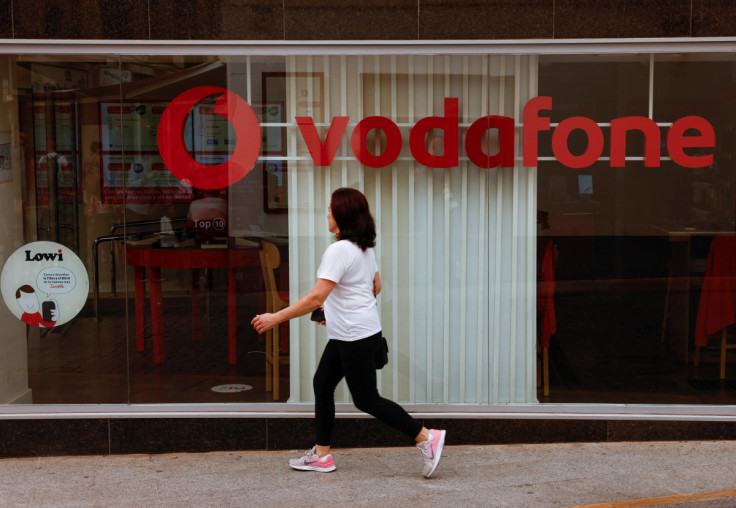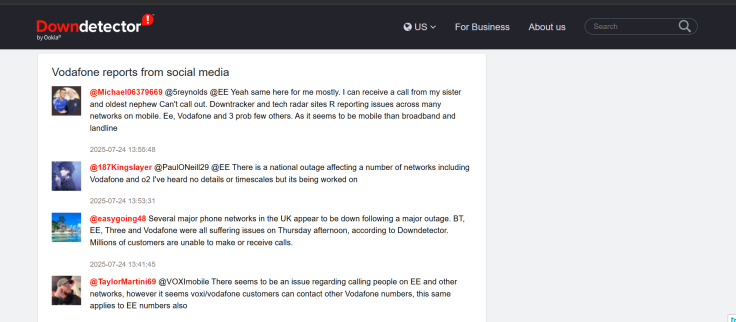EE, Vodafone and BT Networks Go Down: What's Going On?
Users across the UK report mobile signal loss and call failures as top providers face network issues

In a near-nationwide telecom blackout, customers of EE, Vodafone, and BT in the UK found themselves unable to make or receive calls on Thursday—a significant disruption that dominated outage-monitoring platforms and social media.
Downdetector, a service tracking real-time outages, reported thousands of users flagging issues across the country.
Notably, BT's website displayed a message stating it was 'carrying out some maintenance on the site,' further fuelling confusion and concern among subscribers.

What We Know So Far
- EE users could still call landlines and send texts to non-mobile numbers, but experienced failures when calling mobiles on EE or Vodafone networks.
- Vodafone acknowledged 'some technical issues' on its network, admitting that some customers were unable to make or receive calls.
- BT's landline services were disrupted, with users reporting messages indicating that numbers 'don't exist' when dialled, suggesting a complete breakdown of line connectivity.
- Spillover effects affected smaller providers that rely on EE or Vodafone infrastructure. Even O2 and Three experienced smaller spikes in complaints due to failed cross-network calls.
A BT spokesperson told The Sun: 'We're currently addressing an issue impacting our services. We apologise for any inconvenience caused; we're working urgently to fix this issue and will provide a further update as soon as possible.'
Similarly, Vodafone acknowledged the issue on social media while responding to affected customers, and EE confirmed it was aware of the disruption, assuring users it was 'working hard to resolve it'.
Hi there! Thanks for getting in touch. We're currently experiencing technical issues that may affect call services for some customers. We understand how important this is and are working hard to resolve it quickly. Kiran
— Vodafone UK (@VodafoneUK) July 24, 2025
Why It Matters—and How to Cope
The disruption occurs at a time when mobile and landline communication are central to daily life, impacting everything from access to emergency services to remote work. Industry body Ofcom stresses that such failures can:
- Compromise critical connectivity
- Disrupt businesses reliant on telecoms
- Erode consumer trust—even in providers long considered reliable
Customers may be entitled to seek compensation under UK regulations. For broadband and landline networks, a payment of £8 per day applies after two full days of downtime have occurred. Mobile providers may also offer refunds or account credits if service loss is prolonged.
If you're affected:
- Check provider status pages:
- BT: bt.com/help/check-service-status
- Vodafone: online network status checker
- EE: network update page on their site
- Contact customer service—via the app, social media channels, or helplines.
- Explore alternatives—such as Wi-Fi calling, mobile data tethering, or switching to an alternative provider, especially for urgent calls.
- Seek compensation: If the service doesn't resume after eight weeks, escalate through Alternative Dispute Resolution schemes.
The Big Question: What Caused It?
As of this writing, telecoms companies have not confirmed a single root cause. Possible culprits include:
- Network software failures: A misconfiguration or glitch in routing software could sever inter-network calls.
- Hardware faults: A fault in switching equipment at key interconnect hubs might block connections between carriers.
- Maintenance missteps: Speculation has arisen that routine maintenance—possibly triggered by BT's website message—may have inadvertently led to wider system failures.
Importantly, Downdetector shows no significant reports for EE broadband, suggesting the outage is likely confined to voice services, not internet data.
Wider Telecoms Context
While today's outage is dramatic, the UK telecoms infrastructure has experienced prior disruptions—such as those during Storm Éowyn in January, which affected mobile performance regionally. But a simultaneous collapse across three major networks is unprecedented in recent years.
It raises key questions about:
- Resilience: Are current systems reliant on fragile interconnects between providers?
- Routing redundancy: Do networks have sufficient backup pathways to handle system failures?
- Regulatory Oversight: Will Ofcom Launch Investigations or Mandate Reforms?
A Full Recovery Underway—But What Next?
All three providers report that engineering teams are 'working urgently' to restore services. Some users may regain access before others, depending on routing updates and system resets.
When service returns, some essential steps:
- Check for local variations: Some areas may lag—use provider status pages to stay informed.
- Reset devices: Power cycling routers, landline handsets, or apps may aid in reconnection.
- Monitor for follow‑up issues: Carriers may contact affected customers with updates or compensation offers.
For now, the public waits as telecom giants work swiftly to untangle the mess. However, the incident serves as a stark reminder of modern society's fragility: a single system failure, and communication grinds to a halt.
Regulators, industry experts and customers alike will be watching closely to see how swiftly providers can shore up their networks—and whether promises of resilience hold firm.
© Copyright IBTimes 2025. All rights reserved.





















